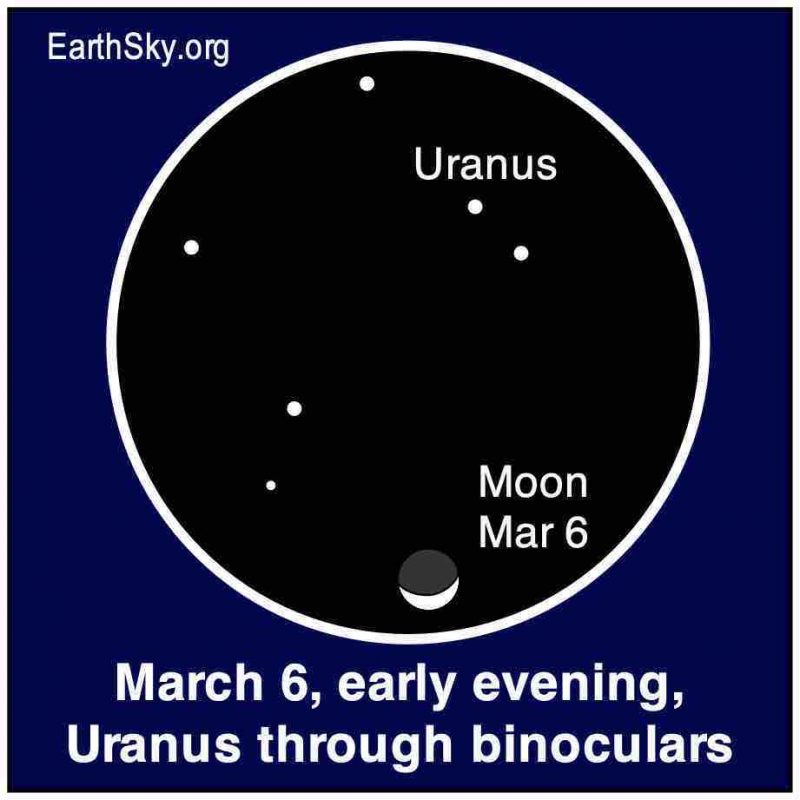
Most people have seen the five classic planets that don’t require any optical aid. In fact, plenty of people have seen them without even knowing that they’re planets! That’s because they’re often the brightest points of light in the night sky, and they draw the eye. But Uranus and Neptune are different stories. These two planets take a deliberate effort to find. While Uranus is technically bright enough to see without optical aid, you’d need dark skies and a finder map to show you exactly where to look. But on March 6, to spot Uranus all you’ll need is a pair of binoculars and the ability to find the moon.
Seeing Uranus through binoculars
The ideal time to find Uranus is when it’s next to a planet that’s bright, such as Venus or Jupiter. (Mercury and Uranus are less than 2 degrees apart on April 17, although it occurs close to sunset.) Another option is to look when the moon passes Uranus. It does so once every month, but some months are better than others.
In 2022, the 7th planet from the sun is moving unobtrusively among the stars of Aries. The crescent moon moves directly west of Uranus on early evening of March 6. The moon is about 20% lit, so while it will be bright, it shouldn’t be overwhelming. Plus Uranus is off the dark limb of the moon. Aim your binoculars at the moon. Facing the moon, Uranus will be toward the top of the binocular field, with the crescent moon at the bottom.
The 2022 lunar calendars are still available. Order yours before they’re gone!
What should you see?
If you have keen eyesight and powerful binoculars, you may be able to see Uranus as a tiny greenish-blue disk. If you can’t see a disk or color in any of the faint dots in view of your binoculars, then try to target Uranus by seeing which light holds steady. The stars will show more of a twinkle.
For most of the U.S., Uranus and the moon are closest before they set, which will be after 10 p.m. local time. The farther west you go, the closer together you’ll get to see Uranus and the moon. In Hawaii, the pair will be less than a degree apart as they set. In Japan, you can see the duo closest on March 7 after sunset. For locations such as Europe, the moon and Uranus are closest when they’re below the horizon or during daylight hours. To find out when the view is best from your location, visit Stellarium.
Bottom line: Look for Uranus in binoculars near the moon on the evening of March 6 before the pair sets around 10 p.m. local time.











